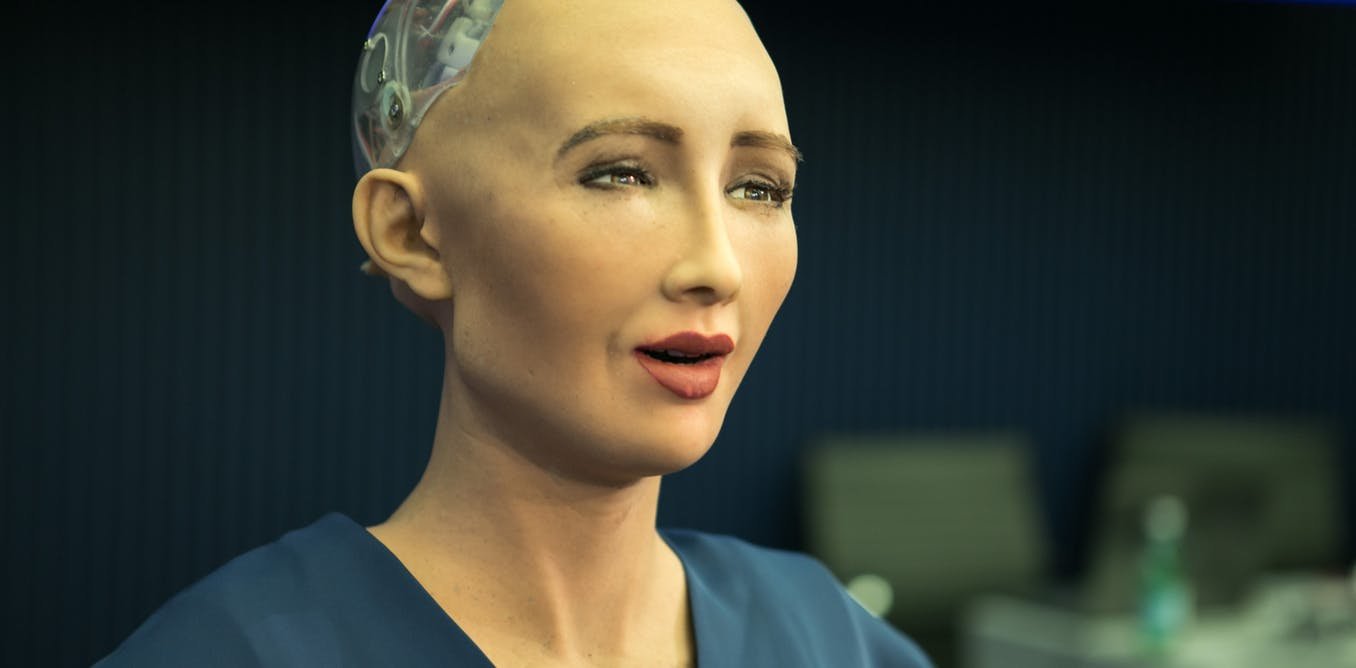
We now rely on robots to find our way, find our mates, do our most difficult surgery, cook our coffee, go for a jog, and even, as was reported last year in Forbes, care for our children.
“So-called robot nannies are already a hit in Japan and China and are now beginning to appear stateside,” the article stated. I obviously find myself wondering what’s next, and unsurprisingly am led to the profession of death, and this million-dollar question: Are robot morticians just around the corner? Let me help unpack that question.
The funeral industry has gotten the reputation of being a stodgy gray-haired resistant-to-change crew of stiffs, and yet in recent years, this seems to have all changed. The industry appears to be intentionally trying to escape its stigma. And new voices in the industry are actively trying to forge new paths. You probably know the list of newfangled funerary gadgets by now: cremated remains in diamonds and fireworks, Harley Davidson coffins, underwater cemeteries, sky burials and all the rest. It seems like anything is possible in today’s funeral world.
And there seem to be two different trends at work. One is to go back to the earth, and our druid or nomadic or indigenous roots, and bury people in backyards or green cemeteries, with gowns or suits that disintegrate with the body and services that are airy and personal and sometimes fun and spunky. The other trend is to fling ourselves at technology with everything we’ve got. To digitize funerals and electrify them and soup them up with gadgets and Wi-Fi, so loved ones from afar can watch in real time. And it is out of this trend toward more and more technological funerals that my question arises. In this unceasing attempt to makes funerals palatable for the new legions of smartphone-addicted baby boomers and even more device-connected millennials who eventually too shall be dying, just how long is it until someone invents a robotic mortician or funeral director who can prep our dead and arrange our services and perhaps even help us decide which type of coffin we want?
Wanting to connect with someone of a philosophical mindset who has long been thinking and writing about the industry I called up colleague Colin Dickey, whose latest book, Ghostland – An American History In Haunted Places is now out in paperback. However, Dickey did not think robot morticians were coming anytime soon. “Technology is the least relevant part of the funeral process,” he told me. “Whatever technological advances and robot morticians and internet funerals they come up with, it will only catch on with the general public if there is some sort of ritual that goes along with it and makes that technology seem useful and purposeful for that generation.” An astute point. Just because it is shiny and electronic and Wi-Fi-connected does not mean the thing will succeed. Not only does an innovation need to fit an economic and aesthetic niche, but when it comes to funerals it really must fit a spiritual niche too.
“There are these moments,” said Dickey. “Birth, getting married, various sorts of initiation rites, and death. And my sense is that if there is one aspect of human culture that is going to resist to technology and this kind of depersonalization it is going to be those moments of great transition, because those have always been the most ritualistic, and we as human beings have invested the most meaning in them.”
He added that these ritualistic moments “have always involved some sort of cultural authority figure who manages and navigates that transition, whether it be a midwife a doctor or a funeral director.”
So, the funeral director survives!?
Dickey’s statement is beautiful and poignant, though I am not so sure I agree with it. As we discuss all the time on this blog, and Funeralwise.com pointed out in their TV Body Count Study, the digital age has helped human beings become ever more detached from death. We see the bodies stack up every day on TV and in video games and movies and even in real life now, at schools and concerts and wars and killings whose images come to us daily. Yet how many Americans have ever smelled a dead body? Or had one in their home? Or held the hand of one, or kissed the forehead? All quite common activities at one time. But times appear to have changed. And so I suppose I’m just not convinced death is as sacred as it once was and that it can’t be handed over to robots. And I suppose I’m just not convinced that the mortician is so sacred that we need it to be human.
In fact, what I take from the trend of green burials and green funerals is that many people are bypassing the formal gatekeepers of the funeral industry. Who needs a funeral director or even a church or temple when your shamanic friend can perform a rite of passage in a field under the oak where you are going to sprinkle your loved one’s ashes. One can even imagine the interesting melding of the two camps, the new technologically inclined funeral goers, and the anti-technologists. An AI cremation unit called Dotty churns the deceased body into energy that the funeral home/art gallery’s bakery uses to make their gluten-free scones. Your loved one’s ashes are deposited into a biodegradable little urn, which you then walk into the field to sprinkle under the tree of your choice and thus experience the non-tech part, the ritual part. It is green and druid and ancient, and also high-tech and partially run by robots. Or, if you prefer a proper open-casket funeral, the new ritual may look like this: A robotic mortician perfectly preps the body based on your leanings, all information you have typed into an app on your smartphone, then a human being leads the service. Maybe there are even robot hired mourners in the audience?
Now the fun part, what will these robot morticians and cremation devices look like? Well, we’ll save that for another blog. But as the funeral industry is so well aware of, it is all a matter of cost. Sure, culture and tradition are important, but money trumps everything in America. The costs of childcare “are staggering,” reported the Forbes article on robot nannies. “In California, for example, the annual daycare cost for one child is $22,460…In this context, even with a $2,000 (or higher price) tag, a robot capable of caring for your children may suddenly look very attractive.”
As with robot nannies, cost more than anything may bring on the robot morticians. As the Forbes article pointed out, robot nannies fall into the greater niche of companion robots, which are designed to interact with, help, and care for humans. And this is “a red-hot market,” stated the article. “A report by P&S Market Research predicts that demand for companion robots will hike from $3.8 billion in 2015 to $34.1 billion by 2022.” One can easily imagine funerary companion robots expanding this already rich market.









